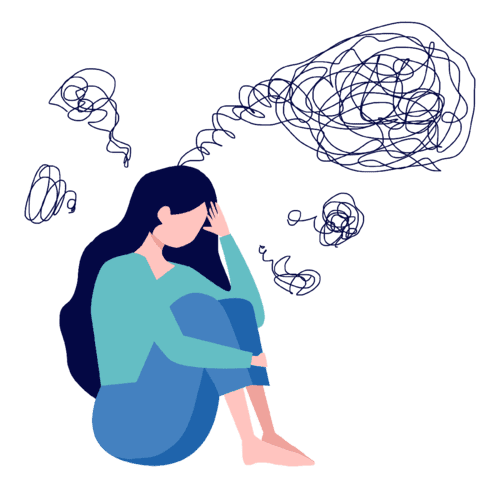Pediatric OCD Assessment
Free Pediatric OCD Assessment

What is Pediatric OCD Assessment?
Pediatric OCD assessment involves evaluating children and adolescents for symptoms of Obsessive-Compulsive Disorder (OCD). It typically includes structured interviews, questionnaires, and observations to identify obsessions (intrusive thoughts) and compulsions (repetitive behaviors). Clinicians assess the severity, frequency, and impact of these symptoms on the child’s daily life. They also consider the child’s developmental stage and any co-existing conditions. Accurate assessment helps determine the appropriate treatment, which may include therapy (such as Exposure and Response Prevention) and, if necessary, medication. Early identification and intervention are crucial for effectively managing pediatric OCD and improving the child’s well-being.
Who can benefit from this Pediatric OCD Assessment?
The Pediatric OCD Assessment can benefit children and adolescents who exhibit symptoms of Obsessive-Compulsive Disorder (OCD). It’s designed to identify and evaluate obsessive thoughts, compulsive behaviors, and the impact on daily functioning. This assessment is valuable for parents, caregivers, and mental health professionals seeking to understand the severity of OCD, develop appropriate treatment plans, and provide timely intervention. Early identification and assessment can lead to effective therapeutic strategies, enhancing the well-being and quality of life for young individuals struggling with OCD.
Pediatric OCD Assessment Accuracy
Assessing pediatric OCD is crucial for accurate diagnosis and treatment. However, diagnosis can be complex due to developmental variations and difficulties in children articulating their symptoms. Accurate assessment involves comprehensive evaluation, considering observed behaviors, interviews with both the child and parents, and potentially using validated assessment tools. Collaboration among mental health professionals, parents, and educators enhances accuracy. Early intervention is essential for effective management and improved outcomes.
Types of Pediatric OCD Assessment
Clinical Interviews:
Mental health professionals conduct interviews with the child and their parents or caregivers to gather information about the child’s symptoms, history, and overall functioning. This helps in understanding the nature and impact of the OCD symptoms.
Child Behavior Checklist (CBCL):
This is a widely used questionnaire completed by parents to assess a child’s behavioral and emotional problems. It can provide insights into a child’s overall emotional well-being, including the presence of OCD symptoms.
Children’s Yale-Brown Obsessive-Compulsive Scale (CY-BOCS):
This is a structured interview and rating scale specifically designed to assess the severity and type of OCD symptoms in children and adolescents. It rates both obsessions and compulsions.
Obsessive-Compulsive Inventory-Child Version (OCI-CV):
This self-report questionnaire is used to assess the presence and severity of obsessive-compulsive symptoms in children and adolescents.
Child OCD Impact Scale (COIS):
This questionnaire assesses the impact of OCD on a child’s daily functioning and quality of life. It evaluates the child’s social, academic, and family life.
Comorbidity Assessment:
Assessing for the presence of other mental health conditions, such as anxiety disorders, depression, or ADHD, is important, as these conditions often coexist with OCD.
Handling Pediatric OCD Issues
Handling pediatric OCD issues requires a sensitive and comprehensive approach, as children and adolescents may have unique needs and challenges. Here are some strategies to consider when dealing with pediatric OCD:
- Early Intervention: If you suspect your child has OCD, seek professional help as early as possible. Early intervention can lead to better outcomes and prevent the disorder from worsening.
- Specialized Treatment: Find a therapist experienced in treating pediatric OCD. Cognitive Behavioral Therapy (CBT), particularly Exposure and Response Prevention (ERP), is considered the gold standard for treating pediatric OCD. This therapy involves gradually exposing the child to their fears (obsessions) while preventing them from engaging in compulsions (response prevention).
- Child-Friendly Language: Explain OCD in simple, age-appropriate terms. Use examples and metaphors that resonate with the child’s understanding. This helps them grasp the concept and reduces stigma.
- Involve Parents and Caregivers: Parents play a crucial role in their child’s treatment. Learn about the disorder, participate in therapy sessions, and follow through with homework assignments given by the therapist.
- Family Therapy: Including family therapy sessions can help address any family dynamics or communication patterns that might be affecting the child’s OCD. It can also help parents better support their child’s recovery.
- Gradual Exposure: Work with the therapist to create a hierarchy of anxiety-inducing situations. Gradually expose the child to these situations in a controlled manner. This helps them confront their fears while learning that the anxiety will decrease over time.
- Reward System: Implement a reward system to motivate the child’s participation in exposure exercises and their efforts to resist compulsions. Positive reinforcement can help maintain their engagement in treatment.
- School Collaboration: Communicate with the child’s school about their OCD. Educate teachers and school staff about the condition and any accommodations that might be needed.
- Medication: In some cases, pediatric psychiatrists may recommend medication as part of the treatment plan. Discuss the potential benefits and risks with a qualified professional.
- Patience and Understanding: Children may find it hard to express their thoughts and emotions. Be patient, and create a safe environment where they feel comfortable sharing their experiences.
- Modeling: Be a positive role model by managing your own stress and anxiety in healthy ways. Children often learn coping strategies by observing their caregivers.
- Consistency: Stick to treatment recommendations and strategies consistently. Children thrive with predictability and structure.
- Celebrate Progress: Celebrate even small victories with your child. Recognize their efforts in facing their fears and resisting compulsions.
- Peer Support: Consider connecting your child with support groups for children with OCD. Sharing experiences with peers who understand can reduce feelings of isolation.
Remember that each child is unique, and their treatment plan should be tailored to their individual needs. A qualified mental health professional experienced in pediatric OCD can guide you through the process of managing and treating OCD in children and adolescents.

